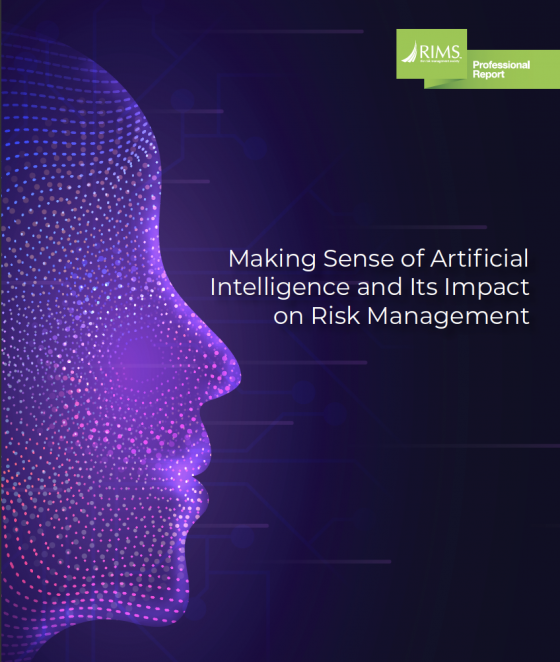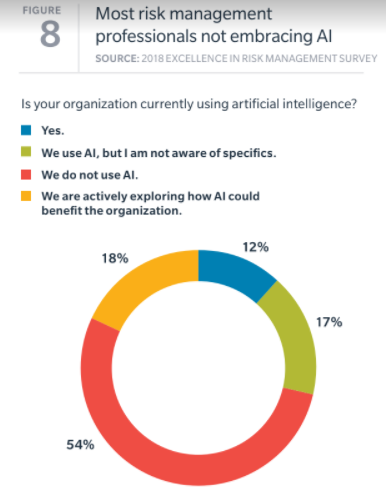
The risk of not adopting some form of artificial intelligence (AI) can be much greater than the potential risks of implementation according to the new RIMS Professional Report: Making Sense of Artificial Intelligence and Its Impact on Risk Management.
Authored by RIMS Strategic and Enterprise Council member and director, Microsoft Enterprise Risk Management Tom Easthope, the report explores forms of AI available to organizations, common implementations scenarios for risk professionals to consider, as well as opportunities for those professionals to advance their careers in light of the emergence of AI technologies.
“While the discussions about the long-term impacts of artificial intelligence on society are important to understand and track, the more pressing issue is to understand the impacts on your industry, your organization and, ultimately, your career,” Easthope said.
“Risk professionals should find ways to participate in strategic discussions around AI and educate themselves on the world of possibilities it offers them and their organizations.”
The report explores AI’s foundational concepts, such as data and algorithms. It also discusses forms of AI, such as artificial general intelligence, (often referred to as “thinking machines” along the lines of C-3PO from the “Star Wars” films) and artificial narrow intelligence (ANI) which focuses on tasks that have major business impacts, including image recognition, credit card fraud detection and speech recognition. Citing research that AI-derived business value will be worth $3.9 trillion in the next three years, ANI presents risks and opportunities for risk professionals and their companies.
And while the report suggests that changes introduced by AI innovation and automation will impact jobs and tasks in the risk, compliance and insurance industry, it also presents methods to keep professionals less expendable, if they’re willing to embrace the technology.
“But while change is inevitable, it does not mean that your risk career must end,” the report said. “Essentially, if you understand the organization’s strategy and how it can enhance its operations with ANI or the context around data, then you have something to offer.”
RIMS Strategic and Enterprise Risk Management Council (SERMC) is organized to provide leadership on strategic and enterprise risk management research, practices, topics and issues, in alignment with RIMS’ vision, affiliations and partnerships. SERMC comprises RIMS members, academics, strategists, consultants and other practitioners who are experienced with strategic and enterprise risk management and related issues.
The report is currently available exclusively to RIMS members. To download the report, visit RIMS Risk Knowledge library at www.RIMS.org/RiskKnowledge. For more information about the Society and to learn about other RIMS publications, educational opportunities, conferences and resources, visit www.RIMS.org.

 exploring the use of IoT systems; 47% are using or exploring the use of AI; and 24% are using or exploring the use of blockchain.
exploring the use of IoT systems; 47% are using or exploring the use of AI; and 24% are using or exploring the use of blockchain.